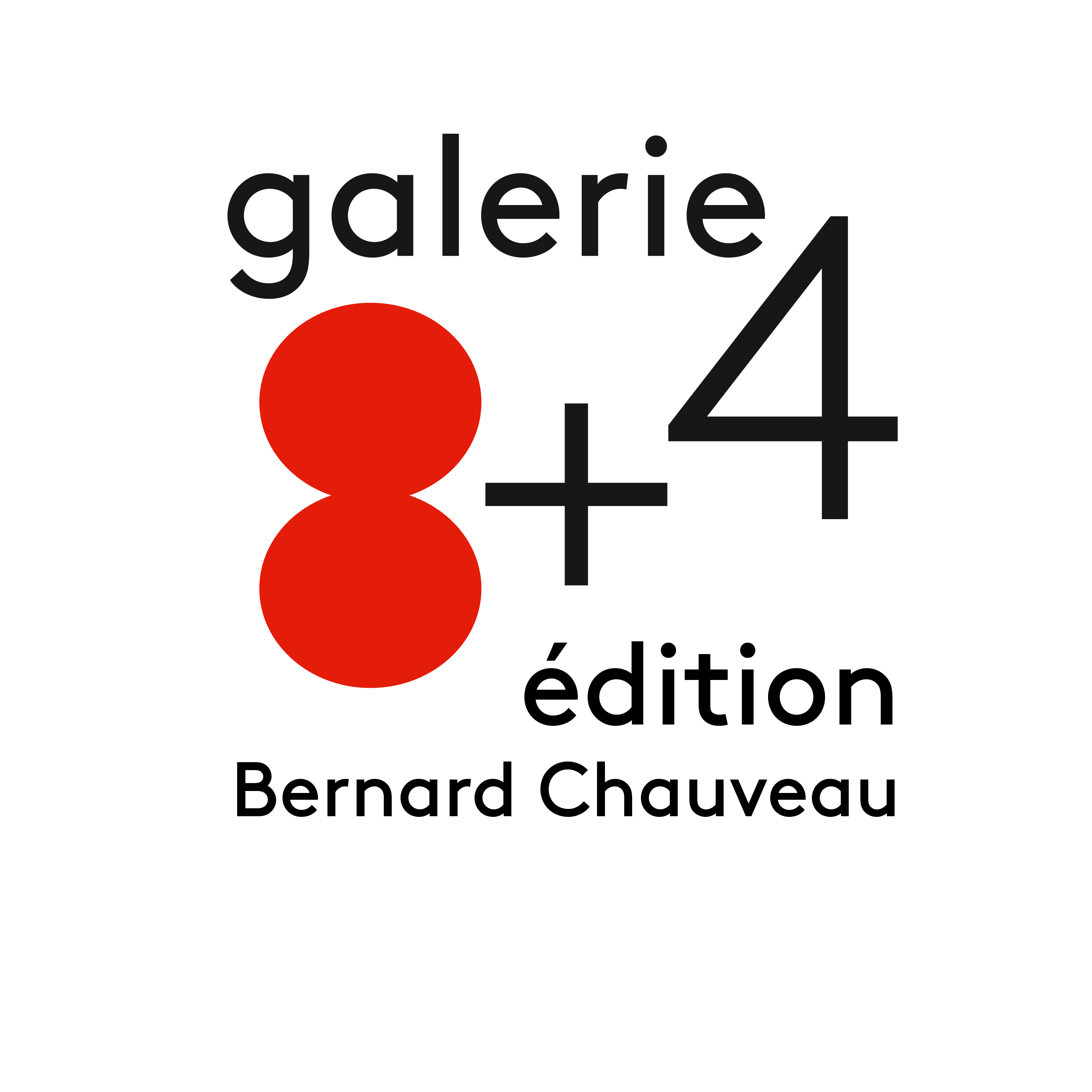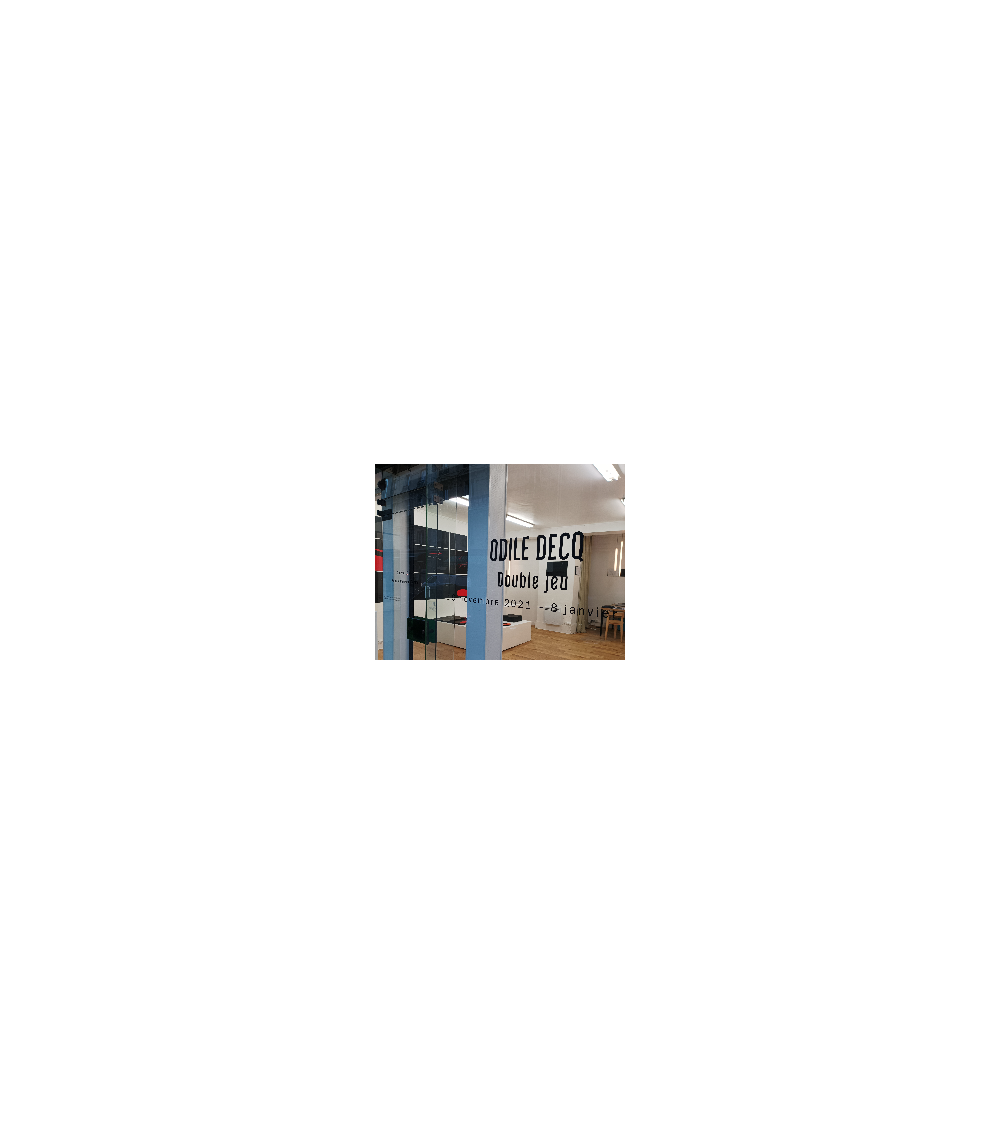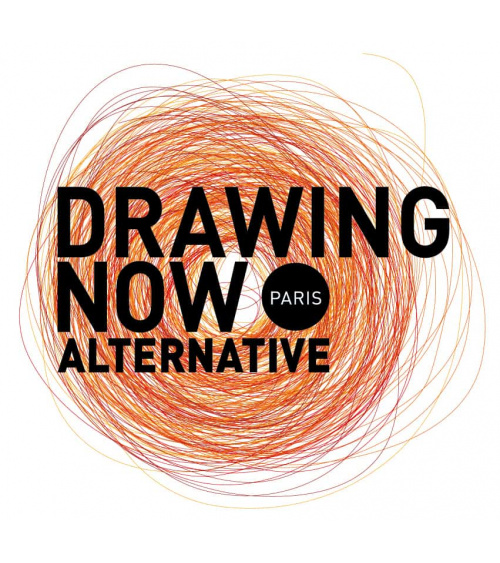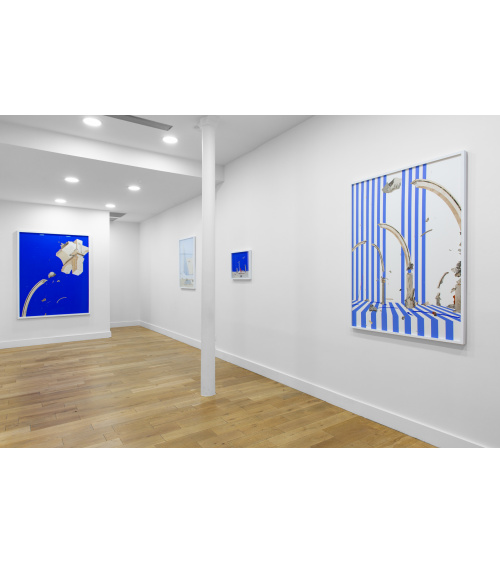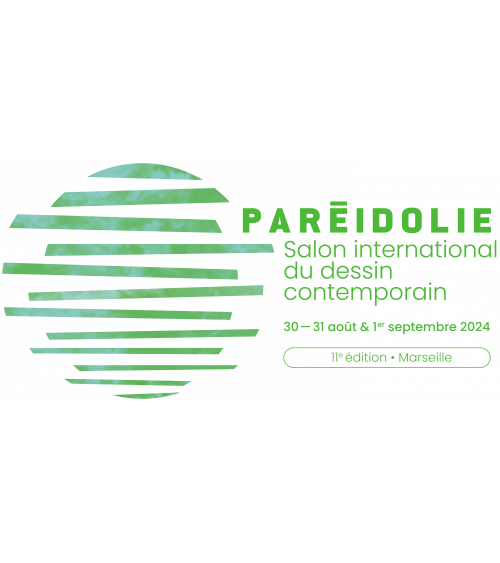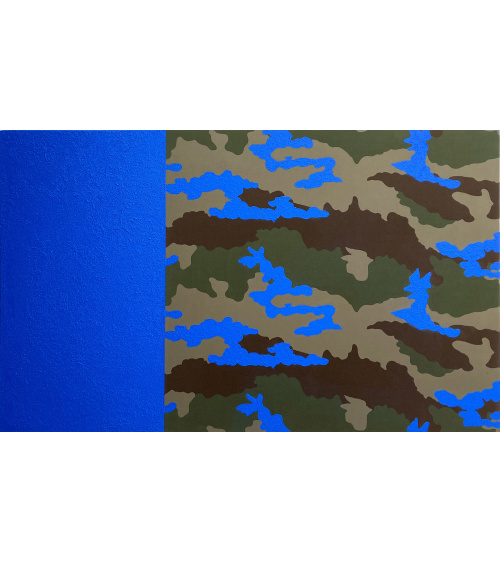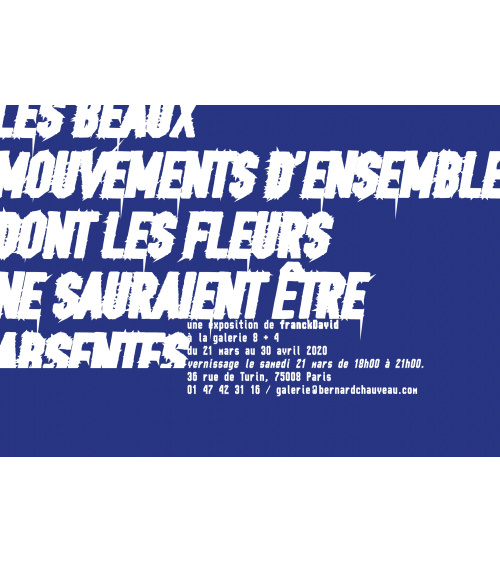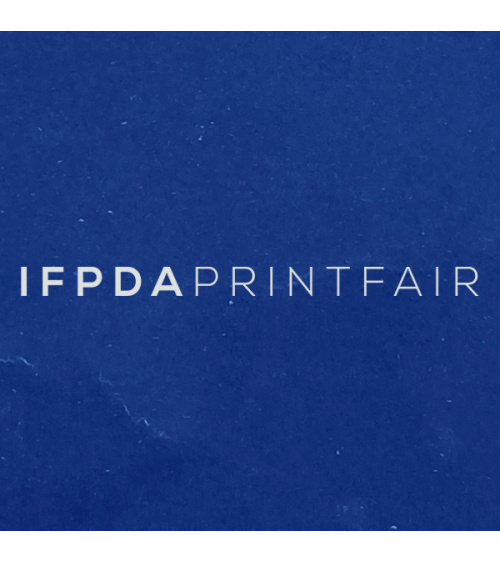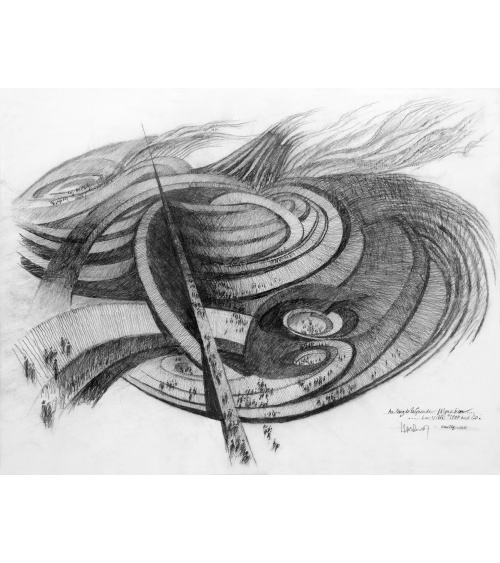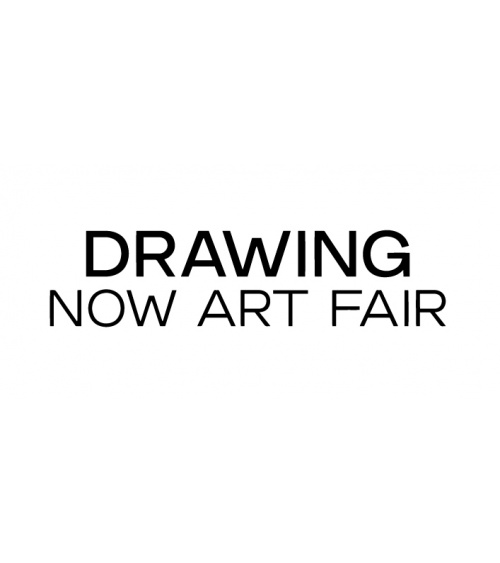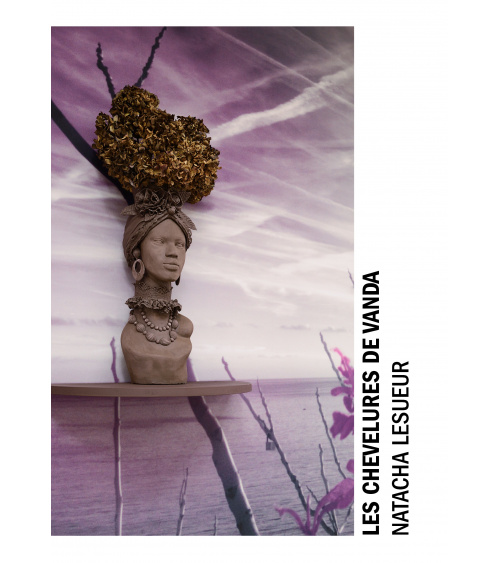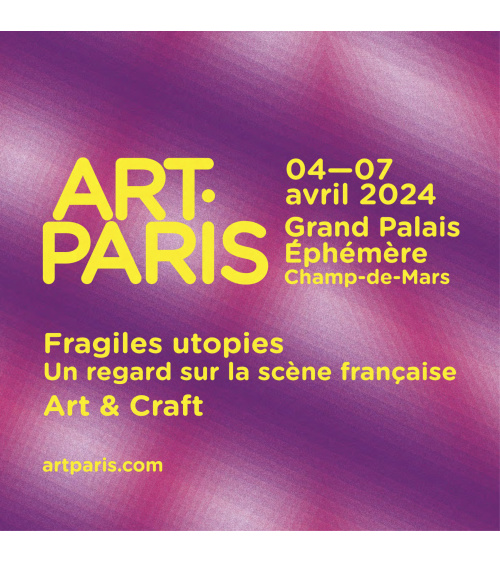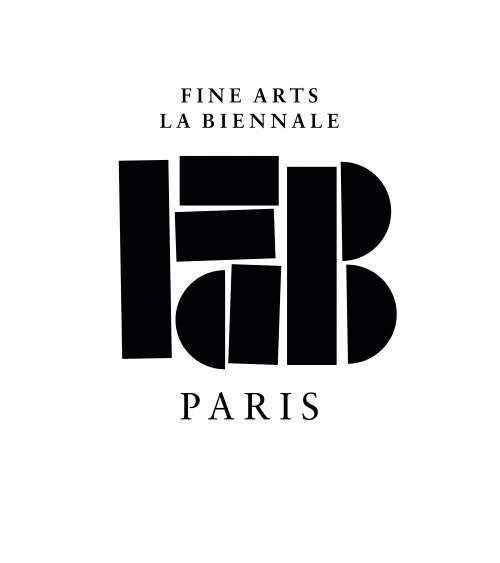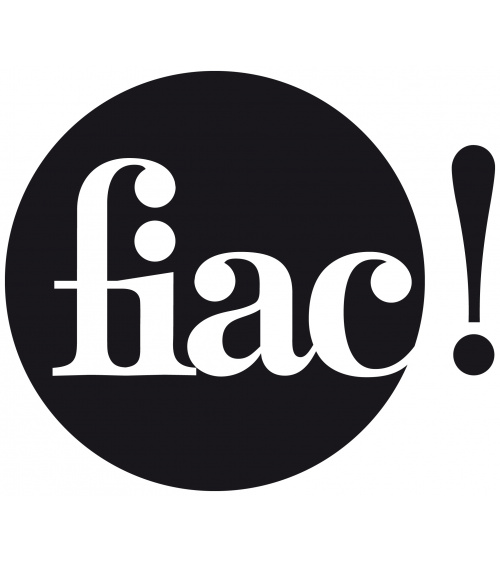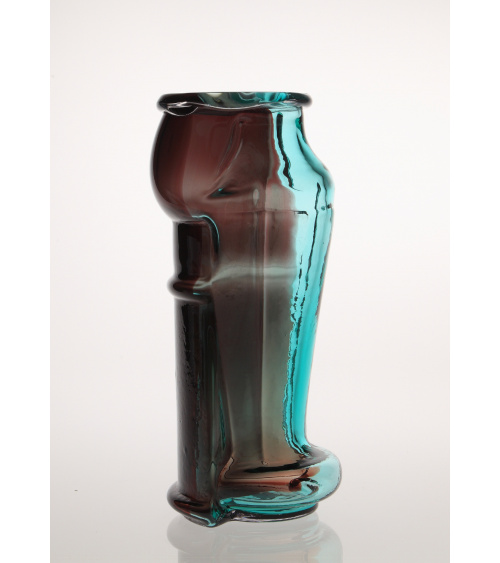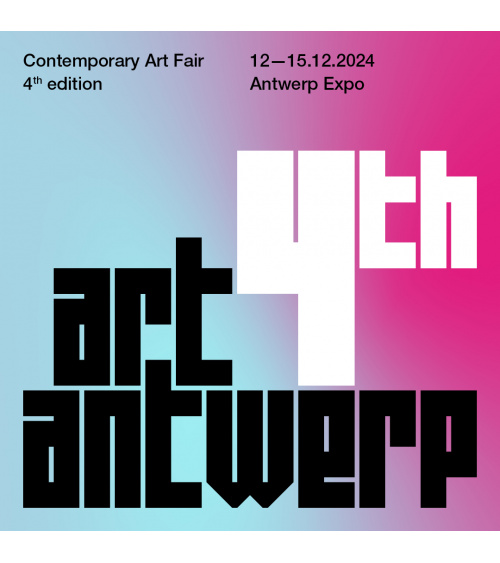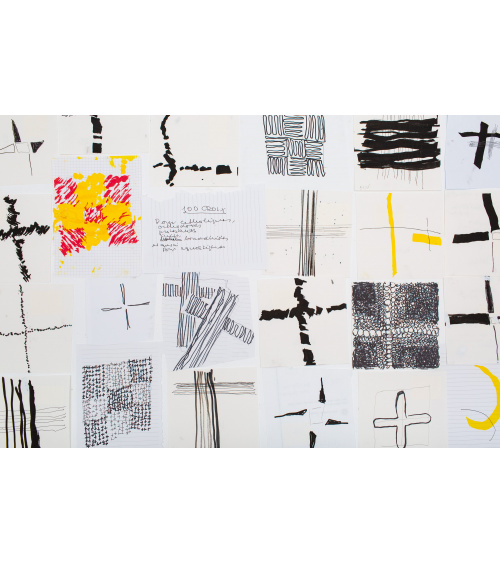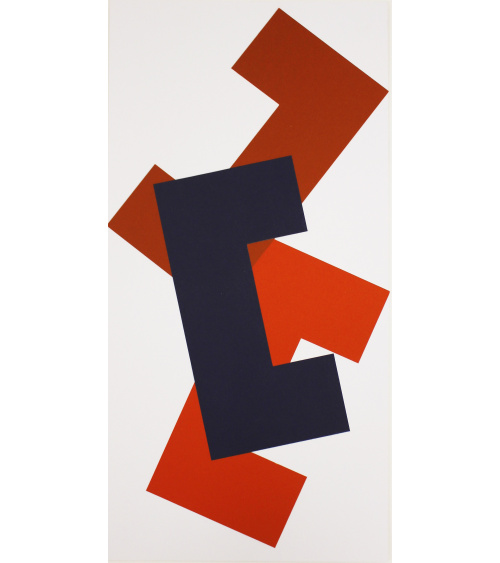Double Jeu / Odile Decq
Exhibition from 19 November 2021 to 8 January 2022.
Opening on 18 November 2021.
I have always considered that architectural work was not limited to the building envelope and its spatial organization, but that, like the architects of the early 20th century, it extended into the interior design, the furniture and sometimes the artwork.
Since the opening of my architectural studio in the early 1980s, I have often tried to install furniture elements in my buildings. I have succeeded very occasionally. In the 1980s and 1990s, the clients I had were not inclined to do so. However, I did make ten "Javelin" lamps for a room in the BPO building in 1990. These lamps became the prototypes of the "Javelin" lamp later developed for MACRO in Rome with Luceplan in the early 2000s. When the BPO was sold and emptied of its contents, including furniture, I bought them all back.
Then, it was the opportunity of a competition for the replacement of telephone booths for the Unesco headquarters in Paris, won in 2000, that allowed me to start my design work on a larger scale. In the hall where these booths were installed, I was asked to choose some furniture and I decided to design them and have them made. For the reception counter for the delegations, I designed an 11-meter long object, then the armchairs, tables, wastepaper baskets and ashtrays. I had been attending the Salon du Meuble in Paris for a long time and I consulted the companies exhibited there with my furniture file; this is how I started working with Domeau & Pérès who were willing to embark on the adventure with me.
At the MACRO in Rome, it was suggested to me to continue the work of the building by the furniture. I went to the Milan Furniture Fair and met Luceplan with my drawings for the "Javelot" lamp. Luceplan then recommended Poltrona Frau to make my chairs and, one thing leading to another, I made all the furniture for the museum as well as the signage. For the Italians, it seemed obvious to ask the architect to do it there, where since the 1960s, all the great Italian designers were architects.
For the Frac Bretagne, it was a little more complicated to do it because of the splitting of public contracts in France; the person who makes the building is not the one who makes the furniture, or even the graphics of the signage. But I managed, despite everything, to design some pieces.
The project I went the furthest with was the Antares tower that I just finished in Barcelona. I designed everything: the furniture, the lamps in the public areas, the bathtubs, the sinks, the kitchens, the swimming pools, the sports areas, the tables and chairs in the restaurant, the signage and the garden.
The garden interests me more and more. The search for the right species to plant fascinates me as much as the consideration of the growing season.
Since childhood, art has been important to me, I studied it in middle school thanks to an incredible drawing teacher who helped me to paint.
I began studying art history before enrolling in architecture school. I watched, followed, visited, explored the salons and fairs in Paris. I gave up painting after I began my architectural studies because I didn't find the time to pursue it and I wasn't sure of my abilities in this field that fascinated and intimidated me at the same time.
The galleries Polaris in Paris and Oniris in Rennes encouraged me to reinvest in this field and I took the plunge a first time in 2007 in Paris. In 2004, the Artist Space gallery in New York had already entrusted me with a space and asked me for an installation "without doing architecture". I then drew on my conceptual preoccupations to propose a constructed virtual space destabilizing the visitor's body, "Sensual HyoerTension". I remembered, at that time, the installation made at the Magasin in Grenoble in 1993, "HyperTension", more spatial but also seeking to blur the tracks of the apprehension and perception of space. At the Chaumont Festival in 2000, "Memories of Highland Lights" was also an installation rather than a garden, as was "Black Hole" in 2009.
Much earlier, the improbable models, more works of art hung on the walls of the studio of the rue Saint-Honoré in 1989, than architectural models of which they represented only the concepts or the lines of force of the projects.
I could still evoke more moments in my history during which art and architecture were intertwined without really knowing which was the first or which was the driving force.
I have always said that there is an artistic component to architecture, and in my work, this component has become more and more important, sometimes even becoming the work itself.
Thus, the works presented at the 8+4 gallery have certainly come from architectural works, but weren't they there before, at the stage of the conception of the project when decisions were made about architectural compositions at different scales? I would not know how to answer this question today and probably less and less.
That is why I do not think it is necessary to know which building it is...
Odile Decq
October 2021
Decq (Odile)
Odile Decq, a French architect, has seen her reputation and the success of her agency, founded in 1978, grow ever stronger. Her work is a complete universe, in which architecture, design, art and urbanism rub shoulders and respond to each other. Her direct style, her assertive and whimsical personality are matched by her architecture with its bold geometries and her innovative creations in all the fields in which she expresses herself.
International recognition came very early, in 1990, with her first major commission: the Banque Populaire de l'Ouest in Rennes. The 10 national and international prizes and the publications that accompanied the construction of this building underlined the birth of a new hope stemming from the punk revolt that challenged dusty conventions.
Among the architectural achievements of this pioneering and passionate woman are the Museum of Contemporary Art in Rome (MACRO), the headquarters of GL Events in Lyon, the Frac Bretagne in Rennes, the Tangshan Archaeological Museum in China, the "Cargo", a start-up incubator in Paris, an office building in Paris, "Le Twist", very singular private houses that she assimilates to works of art, and her latest project, a residential tower in Barcelona "Antares". More than 20 years ago, she entered the field of design by creating a series of furniture, armchairs and tables for the Unesco headquarters in Paris with the publishers Domeau & Pérès. Since then, each of her projects has been the object of new creations, such as new lamps developed for the Luceplan catalogue.
She has always been a contemporary art collector and enthusiast, and in 2007 she took the step of creating a work of art at her first exhibition at the Polaris gallery in Paris. She then sought to reinvest her own research in architecture into art and gradually moved away from it while sometimes keeping a link. Thus, the portfolios of silkscreen prints produced for Bernard Chauveau Édition on the occasion of the creation of the Macro, the Frac Bretagne or the Phantom restaurant at the Garnier opera house are graphic deconstructions of the elements of the projects; the same is true of the series of ALOD plates produced in 2016.
After having designed the Oniris gallery stand for Art Paris in 2010, she exhibited at the gallery in 2017 and produced photographs and mobiles for this occasion. Finally, the Philippe Gravier gallery in Paris asked her to create a set of tables and lamps for Design Miami Art Basel in 2019 and for the FIAC the Pavillon Noir installed on the Place de la Concorde in Paris in October of the same year.
She has received numerous international awards: in 1996, a Golden Lion at the Venice Biennale recognised her work as "Emerging Voices"; in 2016, the Jane Drew Prize was awarded to her by The Architects Journal in London in recognition of a personality "possessing creative strength, advocating the breaking of rules and advocating equality". In 2017, she received the prestigious Lifetime Achievement Award from Architizer in New York for her body of work as well as for "her commitment, contribution and contribution to the architectural debate". In 2018, she was awarded the title of Honorary Fellow of the Royal Architecture Institute of Canada (RIAC), in October the ECC Architecture Award by the European Cultural Centre in Venice, and in November the title of Honorary Fellow of the Royal Institute of the Architects of Ireland (RIAI). She was made an Honorary Doctor of Architecture at Laval University in Quebec in 2015. In France she is a Chevalier de la Légion d'honneur, Commandeur de l'Ordre des Arts et des Lettres and Commandeur de l'Ordre du Mérite.
After having taught since the early 1990s in Paris and in many countries, then directed the ESA in Paris for 5 years, she finally founded her own school of architecture in 2014 in order to renew, move the lines and take into account the generational evolution of architecture students of the 21st century, Confluence Institute for Innovation and Creative Strategies in Architecture. Her school was accredited by the Royal Institute of British Architects (RIBA) in 2017 and is based in Paris since September 2019.
No customer reviews for the moment.
